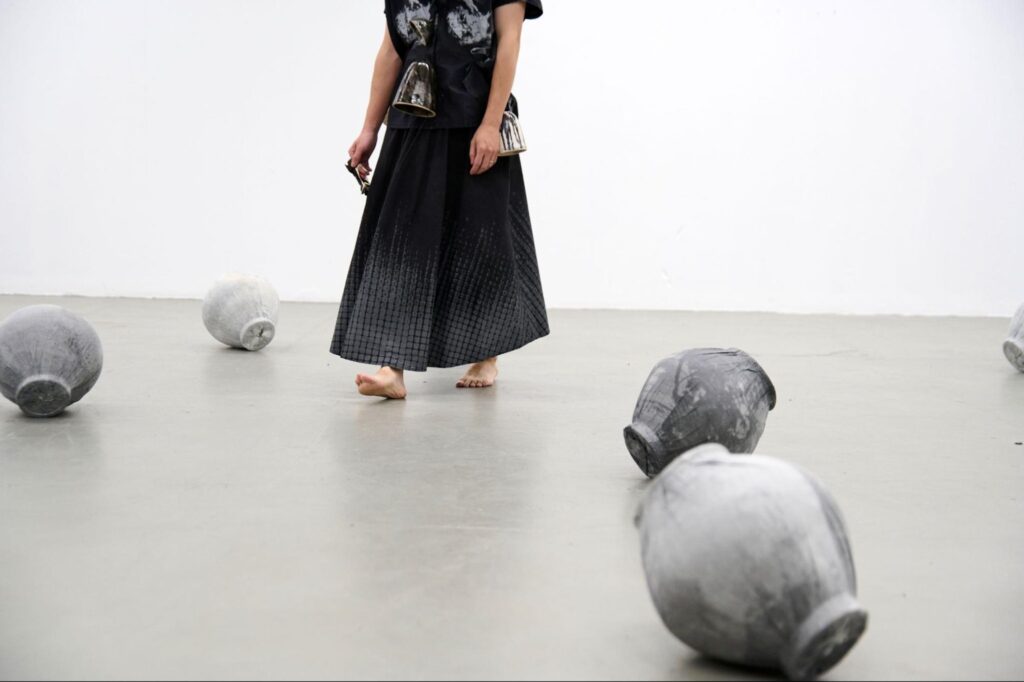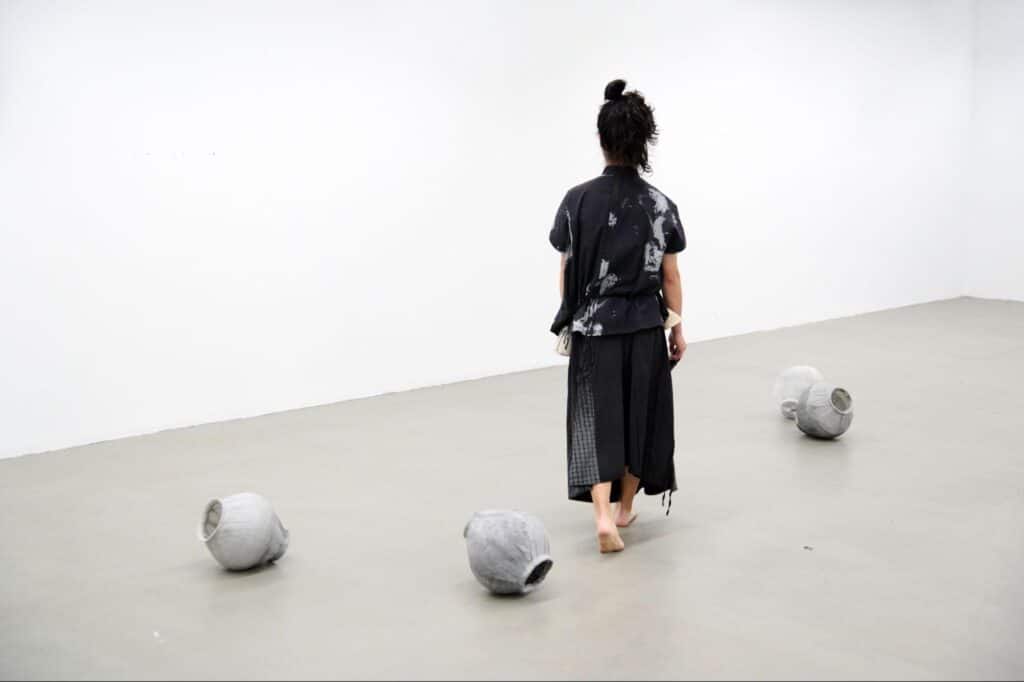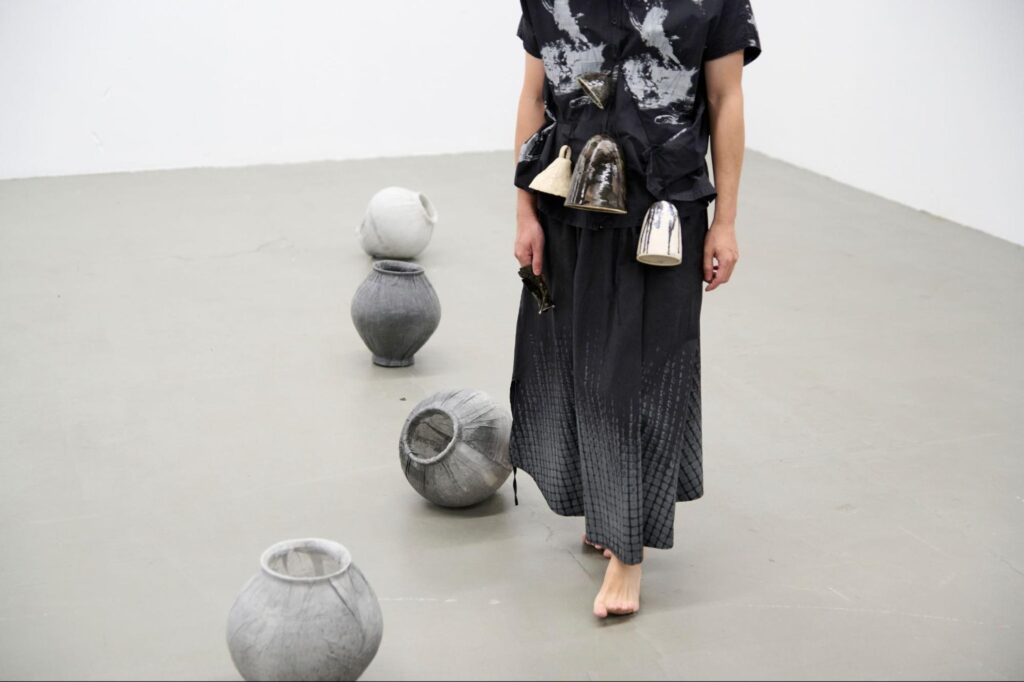By: Melissa Smith
In the bustling corridors of contemporary art, where innovation and tradition intermingle, Paul Rho emerges as a beacon of inventive storytelling through his multidisciplinary approach. Merging performance, sculpture, and photography with a profound exploration of time as a dynamic medium for expression, Rho’s latest work within his Tidal series sets a groundbreaking precedent. At the heart of this series lies a piece of performance art that not only challenges our perception of time but also delves into the intricacies of cultural identity and gender norms.

Photo Courtesy: Paul Rho
Paul Rho’s artistic journey is deeply rooted in his heritage and personal history. Growing up in an environment suffused with the rich traditions of South Korean craftsmanship, he watched his grandmother—a skilled Hanbok maker—transform fabrics into intricate garments. This intimate exposure to the artistry and cultural significance of traditional Korean attire left an indelible mark on Rho’s creative psyche. “I grew up watching my grandmother sewing and cutting fabrics in the house,” reminisces Rho. “I could relate to that.” It is this profound connection to his roots that informs much of his work today.
Rho’s performance piece within the Tidal series embodies a complex narrative about time’s fluidity and non-linearity. By engaging with moon jars—a symbol deeply entrenched in Korean culture—as metaphoric vessels for hours in a day, he orchestrates an ephemeral landscape where these objects are scattered across space in disarray. The act of walking around in circles while knocking these jars over serves as a poignant metaphor for how moments from our past can intrude upon the present in unexpected ways, challenging the conventional understanding that time progresses linearly.

Photo Courtesy: Paul Rho
Adding layers to this already rich tapestry is Rho’s choice of attire during his performance—a Jeogori (skirt) made by Cheonshik Yang, Hanbok designer based in New York. This contemporary garment draws inspiration from traditional South Korean clothing but stands apart due to its modern interpretation. Through this deliberate sartorial choice, Rho seeks to blur the gender lines often associated with certain types of clothing. On one hand, it pays homage to his grandmother’s craft; on another hand, it makes a bold statement about gender identity.
Displayed on the gallery wall adjacent to where Rho performs is a traditional Hanbok—an artifact that further bridges past influences with present explorations. This juxtaposition underscores Rho’s nuanced approach toward engaging with cultural heritage while simultaneously challenging societal norms.
Rho enhances this dialogue about temporality through another unique element—ceramic bells crafted by himself which are scattered throughout the performance space. He explains: “In performance, I ring the bell every time I change my direction. As part of the performance, I walk forward, backward or crossing points to points.” These bells serve multiple symbolic functions: marking transitions within the performance, representing fleeting moments captured within each sound wave, and embodying physical manifestations of time’s passage.

Photo Courtesy: Paul Rho
The artist’s engagement with various mediums does not end at live performances; it extends into sculpture and photography capturing stills from these acts which are then shared across platforms like Instagram or through his website. Through these channels, Paul Rho invites viewers from around the globe into an ongoing conversation about memory, identity,and temporality woven through his artworks.
Paul Rho’s contribution to contemporary art transcends mere aesthetic appeal; it challenges viewers to reconsider preconceived notions about time, a fundamental dimension shaping human experience. In doing so, Rho crafts not just visually compelling pieces, but thought-provoking narratives inviting reflection. This blend of personal history, cultural commentary, and innovative expression marks him as an artist reshaping boundaries between different artistic disciplines, honoring traditions while forging new pathways. Through his lens, time ceases to be linear, becoming instead, a vast ocean encompassing waves from past, present, and future – each crashing, intertwining, and retreating, infinite dance guided by the artist’s imagination.
Published by: Holy Minoza

